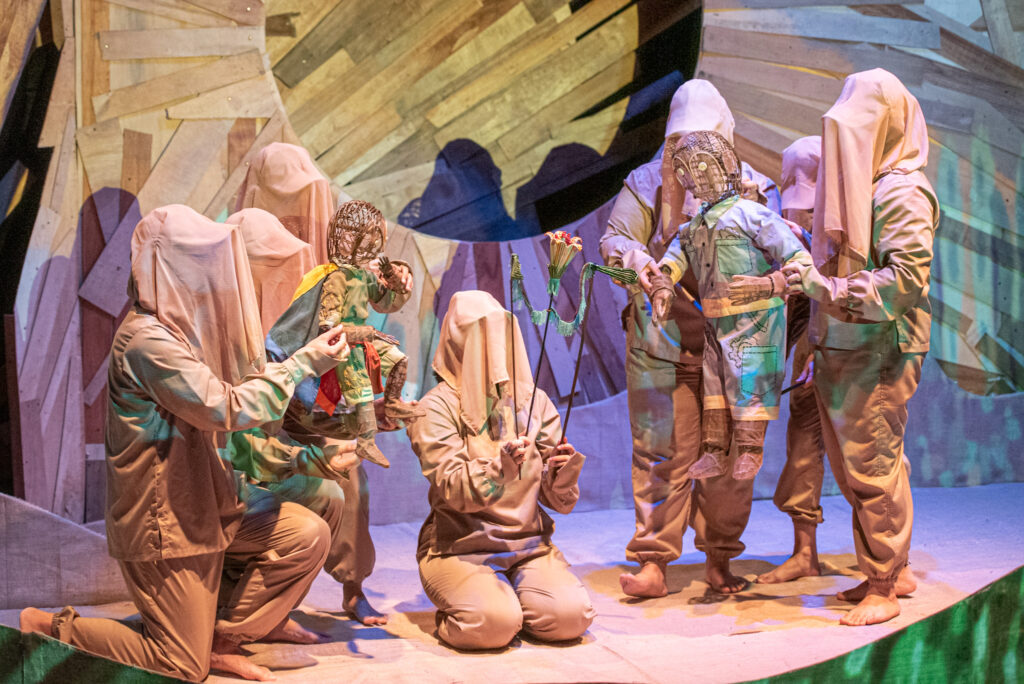One of my favorite books to read as a child was Antoine de Saint-Exupery’s “The Little Prince.”
The thin, white book, its pages sprinkled with simple but charming illustrations, was gifted to me by my parents. I was a voracious little reader then, and I would flip through the pages, reading and rereading the story many times over the years.
I can’t remember what I really took away from it as a little girl (and thinking about it now, I wonder if it truly was meant for children, or was it meant more for grown-ups). But I do remember being enthralled by it. I think many would agree that it’s one of those stories that you have to revisit at various stages of your life—and you’d still find something new out of it.
Turns out that it’s not just through (re)reading that one can discover the magic within the story. Vladimeir Gonzales, a professor at the University of the Philippines’ Department of Filipino and Philippine Literature, has taken the timeless story of “The Little Prince” and adapted it not only into Filipino but into a new form as a play. The result is “Prinsipe Bahaghari,” a puppet play staged by Teatrong Mulat ng Pilipinas and directed by Aina Ramolete.

“Prinsipe Bahaghari” still largely follows the plot of “The Little Prince”. From his tiny asteroid-like planet, the little prince embarks on a journey in search of a way to care for a beloved flower. In this Filipino adaptation, the titular Prinsipe Bahaghari’s flower is akin to a gumamela. Carried by a flock of birds, he meets various personalities on the different planets he lands on—kings and rulers, who teach him (and who he teaches, in turn) about aspects of life and relating to others. These characters are combinations of the many entities the little Prince encounters in the original novel.
But what makes this adaptation more meaningful is how it is not a mere translation into the Filipino language; rather, it makes use of Filipino imagery, culture, and myths to weave a tale that is just as engaging as the French original.
The incorporation of myths also makes it more magical. The original French novella starts with the Pilot or narrator showing his childhood self’s drawing of an elephant swallowed by a boa constrictor—mistaken by the grown-ups as a hat—thus pointing out the theme of adults being unable to see what children can. Meanwhile, this adaptation starts with a mystical tale of a snake eating the moon in the sky—then drawn on paper by the child Kuwentista (narrator), likewise misunderstood by his parents and teacher.
The Kuwentista grows up to be a mechanic who has created and operated various machinery that has been used to cut down forests and flatten mountains to become big cities. Kuwentista talks about this job of his, culminating in a volcanic eruption that, to the viewer, may appear like nature exacting her revenge after being mistreated for so long. Kuwentista is stuck in this ash-covered land, figuring out a way to fix his machines, when he meets Prinsipe Bahaghari, a little boy with a confusing manner of speech.
The use of puppets—whose animated gestures (assisted by three puppeteers) make up for its lack of facial expressions—and the artful stage, lighting, and video design add to the production’s magical appeal. (This grown-up was very much in awe as the play began.) Especially clever is the mix of traditional elements of puppetry, with more modern details like video projections, making this staging more engaging.
It also injects a bit of music into the storytelling. This makes the scenes entertaining in some parts, but a little too somber for a children’s play in others, particularly when Prinsipe speaks to Haring Utos and Haring Negosyo. I found these scenes a bit repetitive and thematically too similar in sound, which made it more challenging to hold attention. Future iterations may benefit from a fuller musical score, with more diverse sounds for different characters or scenes, which may augment the whimsical element of the whole production.
Nevertheless, witnessing the story told in our mother tongue makes the message of “The Little Prince” or “Prinsipe Bahaghari” more profound. Overall, this promising production, with its beautifully crafted puppets and set, takes its viewers back to having that child-like wonder. It also leaves its viewers with nuggets of beautiful reminders on love, care, and connection—things we (perhaps we the old, more than the young) might easily be overlooking no thanks to the busy-ness of life and the instant gratification of technology.
Ultimately, as timeless as the novella is, so too does this puppet play deserve to be.